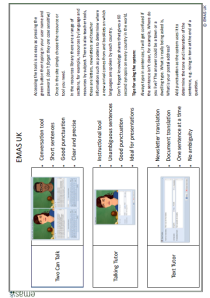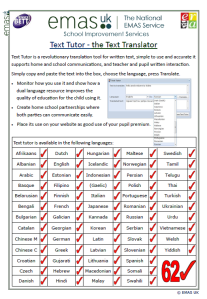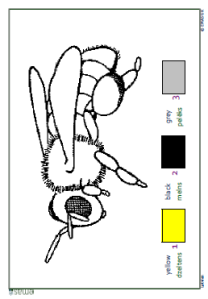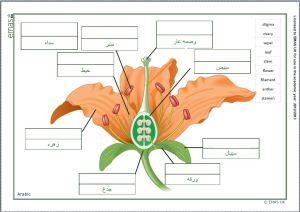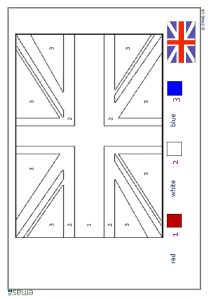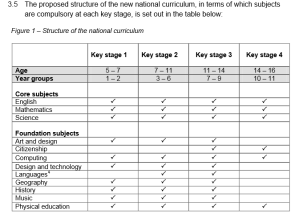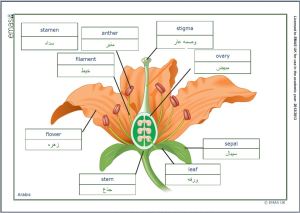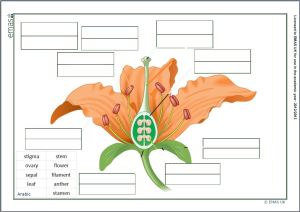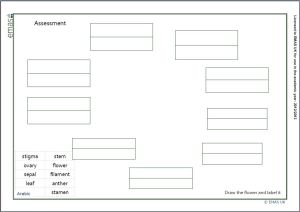Category Archives: Assessment
Challenge your pupils by using time saving pre-made resources from the resource library or our books
My name is John Foxwell and I am one of the creators of EMAS UK. My wife and I both teachers created every single sheet in the resource bank and have tried to aim it at differing age groups more inclined towards a level rather than the age. Some of the resources are as basic as numbers but that rises as the levels get more challenging to cells and their make-up. I tried giving access to the resource library but found that some teachers just downloaded all the wanted and then didn’t buy the product, which was a real shame as the resource library is extremely good value and covers a wide range of ages and levels, 3 to 16 and levels 1 to 5.
The books are interesting as they have different purposes. Pip is all about discussing emotions and starting points, its ability is to start talking about the fear of moving somewhere new, the loneliness of feeling alone and the differences in locations, finishing with the learner understanding that they will make friends and they will feel more at home as time goes by. The maths books is designed to take the learners current knowledge teach them the words that they need to understand what is being asked in English and join their peers as quickly as possible. It also helps teach new concepts by having the right words for the mathematical shapes, operations and procedures in dual language text, bridging the gap between prior learning and current understanding without lack of developmental knowledge.
To see our latest offers like us on Facebook or look on our website
Watch a short video about the resource library – http://www.emasuk.com/Video-Resources
For more information contact us via email @ info@emasuk.com or call us on 0845 009 4939
Resource Library NEW resources
Last month the following resources were uploaded.
For Early Years and Science Colouring Sheet Bird in Albanian, Arabic, Bengali, Chinese Cantonese, Chinese mandarin, Czech, Dutch, English, Farsi, French, German, Gujarati, Hebrew, Hungarian, Italian, Kurdish, Latvian, Lithuanian, Malay, Nepali, Norwegian, Polish, Romanian, Russian, Slovak, Somali, Spanish, Swahili, Urdu, Turkish and Welsh.
Life Cycle of a Frog with 9 scaffolded sheets to support assessment for Science in Bengali, Dutch, German, Gujarati, Italian, Romanian, Slovak, Somali, Spanish, Turkish, Urdu, Albanian, Chinese Cantonese, Chinese Mandarin, Czech, English, Latvian, Nepali, Norwegian, Russian, French, Hebrew, Hungarian, Kurdish, Lithuanian, Malay and Polish.
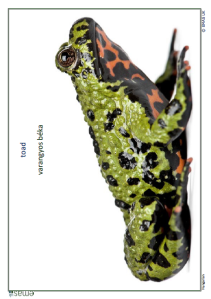 Toad poster Hungarian
Toad poster Hungarian
Toad poster for Science in Albanian, Bengali, Chinese Cantonese, Chinese Mandarin, Czech, Dutch, French, German, Hebrew, Hungarian, Kurdish, Latvian, Lithuanian, Malay, Nepali, Norwegian, Polish, Romanian, Russian, Slovak, Somali, Spanish, Turkish and Urdu.
UK Flag Colouring mat – Afrikaans, Albanian, Aleut, Arabic, Amharic, Armenian, Aromanian, Azerbaijani with more to come.
Thank You cards – Afrikaans, Albanian, Aleut, Alsatian, Amharic, Arabic, Aragonese, Arapaho, Armenian, Aromanian, Asturian, Aymara, Azerbaijaini, Basque, Belarusian, Batak, Bengali, Catalan, Cebuano, Chechen, Cherokee, Chichewa, Chinese Cantonese, Chinese Hakka, Chinese Mandarin, Cimbrian, Cornish, Corsican, Croatian, Czech, Danish, Dutch, English, Estonian, Faroese, Fijian, Filipino, Finnish, French, Frisian, Friulian, Galician, Georgian, German, Greek, Greenlandic, Guarani, Gujarati, Haitian Creole, Hausa, Hawaiian, Hebrew, Hindi, Hungarian, Icelandic, Igbo, Indonesian, Inapiag, Irish Gaelic, Italian, Japanese, Javanese, Jerriais, Kannada, Korean, Kurdish, Kyrgyz, Lakota, Lao, Latin with more to come.
January EMASUK Resource Library – Update
In January we uploaded:
Design Technology and Art resources render the shapes in Albanian, Chinese Cantonese, Chinese Mandarin, Czech, Dutch, English, French, German, Hebrew, Hungarian, Kurdish, Latvian, Lithuanian, Malay, Romanian, Russian, Slovak and Spanish.
Bee and bee hive poster for Science teachers in Albanian, French, Malay, Norwegian, Polish, Russian, Arabic, Bengali, Chinese Cantonese and mandarin, Czech, Dutch, English, German, Gujarati, Hebrew, Hungarian, Italian, Kurdish, Latvian, Lithuanian, Kurdish, Nepali, Romanian, Slovak, Somali, Spanish, Tamil, Turkish, Urdu and Welsh.
A Slovak maths book which is available to all new members.
A guide for teachers on how to use snap cards to pre-teach vocabulary and the e-zine Toucan Jan 2014.
Continuing the life cycle of a frog resources for science teachers, a tadpole poster in Albanian, Bengali, Chinese Cantonese, Chinese Mandarin, Czech, Dutch, English, French, German, Gujarati, Hebrew, Hungarian, Italian, Kurdish, Latvian, Lithuanian, Malay, Nepali, Norwegian, Polish, Romanian, Russian, Slovak, Somali, Spanish, Turkish and Urdu.
http://youtu.be/frQVKGaMQSM Frog Video
Heart and circulation posters for PE and Science in Albanian, Arabic, Chinese Cantonese, Chinese Mandarin, Dutch
Poster – instructions – with a sign for cutting out – Arabic, Bengali, Chinese Cantonese, Chinese Mandarin, Czech, Dutch, French, German, Gujarati, Hebrew, Hungarian, Italian, Kurdish, Latvian, Lithuanian, Malay, Nepali, Polish, Portuguese, Romanian, Russian, Slovak, Somali, Spanish, Swahili, Swedish, Turkish and English.
For safeguarding, ICT and PSHE web safety posters in Albanian, Chinese Cantonese, Chinese Mandarin, Czech, German, Latvian, Gujarati, Hungarian, Italian, Kurdish, Russian, Slovak, Polish, Romanian, Somali, Spanish, Turkish and Urdu.
Safer Internet Day 2014 will be celebrated on 11 February 2014 – http://www.saferinternet.org/safer-internet-day
OFSTED UPDATED Guidance for School inspections Jan 2014
OFSTED have issued new guidance re. inspections from January 1st. Here are the highlights including information for EAL. Interestingly in the part about teaching it informs inspectors to be careful when judging lesson styles and if the Pupil premium usage is of concern they can ask for either;
a) an internal review
b) an external review
c) both
What are your views on this?
OFSTED Subsidiary Guidance Jan 2014
Inspectors should use this guidance during section 5 inspections in conjunction with the School inspection handbook[1] and The framework for school inspection[2]. It is designed to provide guidance on particular aspects of the section 5 inspections
[1] School inspection handbook (120101), Ofsted, 2014; www.ofsted.gov.uk/resources/120101.
[2] The framework for school inspection (120100), Ofsted, 2014; www.ofsted.gov.uk/resources/120100.
Judging progress across the Early Years Foundation Stage and into Key Stage 1
Identifying starting points
- Schools should have clear systems to:
- make an assessment of children’s starting points (baseline)
- plan next steps that challenge children sufficiently
- track the progress of individuals, groups of children and cohorts across the Early Years Foundation Stage and into Key Stage 1
- identify how much progress is made by individuals as well as groups of children and the cohort.
Children who speak English as an additional language: as indicated in the Early Years Foundation Stage Profile Handbook (2013)[1] , learning to speak English as an additional language is not a special educational need. Practitioners should assess the development of children who speak English as an additional language in their home language as well as in English, where possible. While the children’s skills in communication, language and literacy must be assessed in relation to their competency in English, the remaining areas of learning may be assessed in any language.
‘Children must have opportunities to engage in activities and first hand experiences that do not depend solely on English for success, and where they can participate in ways that reveal what they know and can do in the security of their home language. For children to grow in confidence, and hence demonstrate their embedded learning, their environment must reflect their cultural and linguistic heritage and their learning be supported by a wide range of stimuli and experiences.’ (Early Years Foundation Stage Profile Handbook, page 15).
Teaching
Inspectors must not give the impression that Ofsted favours a particular teaching style. Moreover, they must not inspect or report in a way that is not stipulated in the framework, handbook or guidance. For example, they should not criticise teacher talk for being overlong or bemoan a lack of opportunity for different activities in lessons unless there is unequivocal evidence that this is slowing learning over time. It is unrealistic, too, for inspectors to necessarily expect that all work in all lessons is always matched to the specific needs of each individual. Do not expect to see ‘independent learning’ in all lessons and do not make the assumption that this is always necessary or desirable. On occasions, too, pupils are rightly passive rather than active recipients of learning. Do not criticise ‘passivity’ as a matter of course and certainly not unless it is evidently stopping pupils from learning new knowledge or gaining skills and understanding.
When in lessons, also remember that we are gathering evidence about a variety of aspects of provision and outcomes. We are not simply observing the features of the lesson but we are gathering evidence about a range of issues through observation in a lesson. Do not focus on the lesson structure at the expense of its content or the wide range of other evidence about how well children are learning in the school.
Behaviour and safety of pupils at the school
During the initial contact with the school, the lead inspector must ensure that the headteacher understands that the inspection evaluates what behaviour is typically like, not just the behaviour of pupils during the inspection. Often, the grade for behaviour and safety is a grade higher than overall effectiveness. Where this is the case, reports will be given additional scrutiny. Please make sure that sufficient evidence is gathered to warrant the grade awarded.
Inspectors should identify disruptive behaviour of any kind. This may be overt, for example, ‘shouting out’, or pupils ‘talking over the teacher’, or ‘arguing back’, or low level disruption, for example, through continuous chatter, not bringing the right equipment to lessons, not having books or doing homework, pupils arriving late to lessons, pupils chatting when they are supposed to be working together or pupils being slow to settle to their work and so on. It may also be more covert, taking the form, for example, of quiet reluctance from a number of pupils to participate in group work or to cooperate with each other.
Attendance
Inspectors should take into account any differences between the attendance of different groups of learners, such as those of different genders or ethnicities (for example Gypsy, Roma and Traveller children) when evaluating attendance. Inspectors should evaluate how much the school knows about the attendance patterns of groups of learners and the effectiveness of systems to alert them to changes in pupils’ attendance. A sudden or a gradual alteration can indicate a safeguarding issue.
Evaluating the curriculum
The increasing diversity and autonomy of schools and the decisions they make about the curriculum may present some contradictions. Inspectors will need to make a professional judgement about the appropriateness of the curriculum with respect to the specific circumstances of the school[2]. In instances where there is major curriculum balance, or where the curriculum does not prepare children for life in modern British society, inspectors must say so clearly and explain why.
Schools judged as ‘requires improvement’
- Where governance is ineffective in a school judged as ‘requires improvement’ and is graded three for leadership and management, inspectors should include an external review of governance in their recommendations for improvement. The form of words to be used in the report under ‘What the school should do to improve further’ is ‘An external review of governance should be undertaken in order to assess how this aspect of leadership and governance may be improved’. It is for the school to decide how this review will take place, and to commission and pay for it. Such reviews aim to be developmental, and do not represent a further inspection. Full details on what might be the form and nature of such reviews can be found on the following link: http://www.education.gov.uk/nationalcollege/review-of-governance.
- Where the report identifies specific issues regarding the provision for pupils eligible for the pupil premium, inspectors should also recommend an external review on the school’s use of the pupil premium. The form of words to be used is ‘An external review of the school’s use of the pupil premium should be undertaken in order to assess how this aspect of leadership and governance may be improved’. In such instances, in addition to any support that the governing body may benefit from, inspectors should advise that the school seeks support from an external system leader with a track record of accelerating disadvantaged pupils’ achievement and closing gaps. Full details on what might be the form and nature of such reviews can be found on the following link: http://www.education.gov.uk/nationalcollege/index/support-for-schools/pupilpremiumreviews.htm
- It is expected that there will be many cases where inspectors will recommend both an external review of governance and an external review of the school’s use of the pupil premium. However, there may be instances where this will not be necessary, for example, where the proportions of pupils eligible for the pupil premium that make and exceed expected progress are above national figures and are similar to those for other pupils in the school, or where the number of eligible pupils is five or fewer.
- Even where leadership and management is judged to be good, inspectors should use their professional judgement to determine whether a recommendation for an external review of the school’s use of the pupil premium would benefit the school.
Disapplication of the National Curriculum
- The majority of the national curriculum is being ‘disapplied’ (ie suspended) from September 2013 for one year for most subjects to give all schools the freedom to change what they teach in order to prepare for the new national curriculum. Disapplication is a suspension of the content of the national curriculum, not the subjects themselves. New statutory programmes of study will be introduced for all subjects from 2014 (2015 for Key Stage 4 English, maths and science) – with the addition of foreign languages at Key Stage 2. ICT will be renamed computing.
- Whilst schools will still have to teach all national curriculum subjects, what they cover will be up to them. The intention is to help teachers to manage the transition from the old national curriculum to the new one. For example, teachers can stick broadly to the current national curriculum but will be able to vary when they teach topics and what topics they teach. They can use this freedom to cover any gaps in pupils’ knowledge and understanding to make sure they are prepared to learn the new curriculum from 2014.
- Disapplication is a permissive measure – no school will be required to change its curriculum in 2013/14. At Key Stage 4 for English, mathematics and science the freedom will last for two academic years because the new national curriculum will be taught from 2015/16 for those pupils. Teachers will still have to teach the national curriculum for English, maths and science to pupils in years 1, 2, 5 and 6 in 2013/14. This is to ensure that pupils are properly prepared for national curriculum tests at Key Stage 1 and Key Stage 2 in summer 2014.
- It is for schools to decide how the pupil premium is spent. However, they are accountable for their use of this funding. Since September 2012, schools have been required to publish online information about their pupil premium allocation and how they plan to spend it. They must also publish a statement of how they spent the money for the previous year, and its impact on the attainment of pupils eligible for support through the pupil premium. This is intended to ensure that parents and others are made fully aware of the impact on the attainment of pupils covered by the pupil premium.
- Local authorities decide how to allocate the pupil premium for pupils from low-income families in non-mainstream settings. The local authority must consult non-mainstream settings about how the premium for these pupils should be used.
- When evaluating the effectiveness of leaders, managers and governors, inspectors should gather evidence about the use of the pupil premium in relation to the following key issues:
Evaluating the school’s use of the pupil premium[3]
- the level of pupil premium funding received by the school in the current academic year and levels of funding received in previous academic years
- how the school has spent the pupil premium and why it has decided to spend it in the way it has
- any differences made to the learning and progress of pupils eligible for the pupil premium as shown by performance data and inspection evidence.
- In many schools, the number of looked-after children is small and these pupils may not figure in headline performance data. Inspectors should record evidence of the impact of the pupil premium on looked-after children currently on roll in the school on a separate evidence form.
- Inspectors should note that they should not report separately on the progress, attainment and/or achievement of pupils eligible for support through the pupil premium, or make comparisons with the progress made by other pupils, where individual pupils eligible for support through the pupil premium might be identified. Generally, this will be the case where there are five or fewer pupils at the school. However, where a small number of eligible pupils represents a sizeable proportion of the overall number of pupils on roll, inspectors should exercise their judgement on reporting on how well these pupils are supported. Inspectors should be mindful that the need to avoid identification of individuals remains a key consideration.
- For example, inspectors may write in the report ‘In this school, the pupil premium funding is used/is not used well to support individual pupils’, and in the context section ‘only a very small number of pupils is supported by the pupil premium.’
- Inspectors must consider the difference between the average points scores in each of English and mathematics in national assessments at the end of Key Stage 2, and at GCSE at the end of Key Stage 4, for the following groups:
Impact of pupil premium and Year 7 catch-up
- those pupils known to be eligible for free school meals and all other pupils (FSM and non-FSM pupils)
- children who are looked after and all other pupils (CLA and non-CLA)
- children of service families and all other pupils. (This information is not contained in RAISEonline, but inspectors will expect schools to provide it during the inspection.)
- Inspectors must evaluate the performance in English and in mathematics of groups of pupils who are supported through the pupil premium. Where a gap is identified between the performance of pupils supported through the pupil premium and all others in the school, inspectors must report this and whether it is narrowing. They should express gaps in terms of National Curriculum levels or a period of time (such as ‘two terms’) at the end of Key Stage 2, or GCSE grades at the end of Key Stage 4.
- The following table shows suitable ways of expressing gaps in average points scores using plain language and simple fractions, which should be reported in words. Inspectors should take into account the way in which the school divides up the school year, such as into terms, in selecting wording that readers will understand.
| points |
1 |
1.5 |
2 |
3 |
4 |
4.5 |
5 |
6 |
|
|
|
|
|
|
|
|
|
|
| Key Stage 2 |
|
|
|
|
|
|
|
|
| NC levels |
|
1/4 |
1/3 |
1/2 |
2/3 |
3/4 |
|
1 |
| terms (3 per year) |
1 |
|
2 |
3 |
4 |
|
5 |
6 |
| years |
1/3 |
1/2 |
2/3 |
1 |
|
11/2 |
|
2 |
| months |
4 |
6 |
8 |
12 |
16 |
18 |
20 |
24 |
|
|
|
|
|
|
|
|
|
|
| Key Stage 4 |
|
|
|
|
|
|
|
|
| GCSE grades |
|
1/4 |
1/3 |
1/2 |
2/3 |
3/4 |
|
1 |
- Inspectors must also evaluate and report on the progress being made by pupils targeted for the Year 7 catch-up programme, including through analysis of summary data kept by the school.[4]
[1] Early Years Foundation Stage profile Handbook
http://www.education.gov.uk/schools/teachingandlearning/assessment/eyfs/a00217599/eyfs-handbook.
[2] Studio schools and UTCs, for example, are established with a particular curriculum, based on a different rationale and approach to teaching.
[3]The pupil premium is specific, additional funding provided to support the education of pupils known to be eligible for free school meals, pupils who have been eligible for free school meals at any point in the last 6 years (known as the Ever6 free school meal measure), children who have been looked after continuously for a period of 6 months and children whose parents are currently serving in the armed forces. See http://www.education.gov.uk/schools/pupilsupport/premium/a0076063/pp for further information.
[4] This programme is for pupils who did not achieve the expected Level 4 in either reading or mathematics at the end of Key Stage 2. http://www.education.gov.uk/schools/pupilsupport/year7catchup/a00216777/y7-catch-up-premium-faq
September 2013 – OFSTED subsidary guidance EMASUK Keeping you up-to-date
In September a few things are changing for schools and OFSTED guidance for inspectors change accordingly. To find the information http://www.ofsted.gov.uk/resources/subsidiary-guidance-supporting-inspection-of-maintained-schools-and-academies or see a summary of some of the points below. The biggest challenge will be the disapplication of the National Curriculum in the UK and the use of Pupil Premium.
Disapplication of the National Curriculum
- The majority of the national curriculum is being ‘disapplied’ (ie suspended) from September 2013 for one year for most subjects to give all schools the freedom to change what they teach in order to prepare for the new national curriculum. Disapplication is a suspension of the content of the national curriculum, not the subjects themselves. New statutory programmes of study will be introduced for all subjects from 2014 (2015 for Key Stage 4 English, maths and science) – with the addition of foreign languages at Key Stage 2. ICT will be renamed computing.
- Whilst schools will still have to teach all national curriculum subjects, what they cover will be up to them. The intention is to help teachers to manage the transition from the old national curriculum to the new one. For example, teachers can stick broadly to the current national curriculum but will be able to vary when they teach topics and what topics they teach. They can use this freedom to cover any gaps in pupils’ knowledge and understanding to make sure they are prepared to learn the new curriculum from 2014.
- Disapplication is a permissive measure – no school will be required to change its curriculum in 2013/14. At Key Stage 4 for English, mathematics and science the freedom will last for two academic years because the new national curriculum will be taught from 2015/16 for those pupils. Teachers will still have to teach the national curriculum for English, maths and science to pupils in years 1, 2, 5 and 6 in 2013/14. This is to ensure that pupils are properly prepared for national curriculum tests at Key Stage 1 and Key Stage 2 in summer 2014.
Evaluating the school’s use of the pupil premium
- It is for schools to decide how the pupil premium is spent. However, they are accountable for their use of this funding. Since September 2012, schools have been required to publish online information about their pupil premium allocation and how they plan to spend it this year. They must also publish a statement of how they spent the money for the previous year and its impact on the attainment of pupils eligible for support through the pupil premium. This is intended to ensure that parents and others are made fully aware of the impact on the attainment of pupils covered by the pupil premium.
- Local authorities decide how to allocate the pupil premium for pupils from low-income families in non-mainstream settings. The local authority must consult non-mainstream settings about how the premium for these pupils should be used.
- When evaluating the effectiveness of leaders, managers and governors, inspectors should gather evidence about the use of the pupil premium in relation to the following key issues:
1. the level of pupil premium funding received by the school in the current academic year and levels of funding received in previous academic years
2. how the school has spent the pupil premium and why it has decided to spend it in the way it has
3. any differences made to the learning and progress of pupils eligible for the pupil premium as shown by performance data and inspection evidence.
[1]The pupil premium is specific, additional funding provided to support the education of pupils known to be eligible for free school meals, pupils who have been eligible for free school meals at any point in the last 6 years (known as the Ever6 free school meal measure), children who have been looked after continuously for a period of 6 months and children whose parents are currently serving in the armed forces. See http://www.education.gov.uk/schools/pupilsupport/premium/a0076063/pp for further information.
Impact of pupil premium and Year 7 catch-up
- Inspectors must consider the difference between the average points scores in each of English and mathematics in national assessments at the end of Key Stage 2, and at GCSE at the end of Key Stage 4, for the following groups:
those pupils known to be eligible for free school meals and all other pupils (FSM and non-FSM pupils)
children who are looked after and all other pupils (CLA and non-CLA)
children of service families and all other pupils. (This information is not contained in RAISEonline but inspectors will expect schools to provide it during the inspection.)
- Inspectors must evaluate the performance in English and in mathematics of groups of pupils who are supported through the pupil premium. Where a gap is identified between the performance of pupils supported through the pupil premium and all others in the school, inspectors must report this and whether it is narrowing. They should express gaps in terms of National Curriculum levels or a period of time (such as ‘two terms’) at the end of Key Stage 2, or GCSE grades at the end of Key Stage 4.
- The following table shows suitable ways of expressing gaps in average points scores using plain language and simple fractions, which should be reported in words. Inspectors should take into account the way in which the school divides up the school year, such as into terms, in selecting wording that readers will understand.
| points |
1 |
1.5 |
2 |
3 |
4 |
4.5 |
5 |
6 |
| Key Stage 2 | ||||||||
| NC levels |
1/4 |
1/3 |
1/2 |
2/3 |
3/4 |
1 |
||
| terms (3 per year) |
1 |
2 |
3 |
4 |
5 |
6 |
||
| years |
1/3 |
1/2 |
2/3 |
1 |
11/2 |
2 |
||
| months |
4 |
6 |
8 |
12 |
16 |
18 |
20 |
24 |
|
|
|
|
|
|
||||
| Key Stage 4 |
|
|
|
|
|
|||
| GCSE grades |
1/4 |
1/3 |
1/2 |
2/3 |
3/4 |
1 |
- Inspectors must also evaluate and report on the progress being made by pupils targeted for the Year 7 catch-up programme, including through analysis of summary data kept by the school.[1]
[1] This programme is for pupils who did not achieve the expected Level 4 in either reading or mathematics at the end of Key Stage 2. http://www.education.gov.uk/schools/pupilsupport/year7catchup/a00216777/y7-catch-up-premium-faq
Pupils’ cultural development is shown by their:
understanding and appreciation of the wide range of cultural influences that have shaped their own heritage
willingness to participate in, and respond to, for example, artistic, musical, sporting, mathematical, technological, scientific and cultural opportunities
interest in exploring, understanding of, and respect for cultural diversity and the extent to which they understand, accept, respect and celebrate diversity, as shown by their attitudes towards different religious, ethnic and socio-economic groups in the local, national and global communities.
UK National Curriculum – EAL special
This is an Overview of the UK National Curriculum 2014 from document:
showing the relation to EAL learners and how EMASUK resources can support some of these areas.
The New National Curriculum 2014 will look like this:
In relation to EAL pupils it states in sections 4.5 and 4.6 that:
Teachers must also take account of the needs of pupils whose first language is not English. Monitoring of progress should take account of the pupil’s age, length of time in this country, previous educational experience and ability in other languages.
The ability of pupils for whom English is an additional language to take part in the national curriculum skills in English. Teachers should plan teaching opportunities to help pupils develop their English and should aim to provide the support pupils need to take part in all subjects.
From these statements clearly the government are expecting every ordinary teacher (i.e. not a linguist) to work with both English speaking and non-English speaking children in their classrooms at the same time. If ordinary teachers are able to do this job, in this way, then they need to communicate effectively with all students regardless of language and it is the schools job to provide them with the tools and services needed to do their job effectively. As schools who have been using this system in classrooms are now getting more confident we are seeing the results that the children, teachers and school see real differences including improved self-esteem, improved academic language retention and ultimately improved performance. So rest assured it can be done.
Personal help and effective use of a versatile computer programme which supports pupils –and parents –who are at the early stages of learning English enables them to make excellent progress in English. These pupils make better progress than similar pupils, nationally.
OFSTED 2013
Schools are able to do this by ensuring that teachers are able confident in their ability to use the resources and tools and use them when and where necessary. In some schools it may mean that a new arrival arrives in the classroom on day 1 and the resource vault is used and two can talk to assess their ability in their home language. Schools are using the same assessment as they would do with any child that moves from another town or county as Two can Talk allows them the flexibility to do this. It may be necessary a few weeks down the line not to sue these but instead use Terry (talking tutor) to give instruction or biligualise spoken text using the whiteboard as a medium. At parent interview time again Two Can Talk could come into its own as it is great to record and keep a record of the parents views and understanding. Its knowing what is available and then working out what suits you best in each situation.
The National Curriculum supports all this by telling everyone to follow the teachers who having been teaching the EMASUK way by ensuring the children develop their academic vocabulary, and those who have been on our training courses will be au fait with how to develop this in normal classrooms no matter how many languages are within it. For many schools that have been resistive to these ideas the NC clearly informs them that they must get on board with our way of teaching and learning and shares with them what we all know in 6.4 that:
Pupils’ acquisition and command of vocabulary are key to their learning and progress across the whole curriculum. Teachers should therefore develop vocabulary actively, building systematically on pupils’ current knowledge. (What John and I have been saying for five years now). They should increase pupils’ store of words in general; simultaneously.
In year 3 as teachers and pupils developed it became clear to us that exams and SATS were a really huge problem not only for learners but for their teachers. Often there wasn’t enough time for them to teach the academic language needed but also no resources to save them preparation time. Today teachers use of our GCSE books (available in many languages) support their further statement in 6.4 that;
Older pupils should be taught the meaning of instruction verbs that they may meet in examination questions. It is important to induct pupils into the language which defines each subject in its won right, such as accurate mathematical and scientific language. http://shop.emasuk.com/category/2617/exam_success_books
All of this is easily done providing the ethos of the schools is not that of ‘One size fits all’, but each individual has learnt before, so lets move from there and bridge the language gap to support their English language acquisition. Using Two Can Talk allows you to find out where they are and what they know in their first language. From there conversion of concept to the introduction of the English word as opposed to using time to go over the whole concept again means the speed at which they pick up English increases. Used with the library of resources that supports specific academic language development, teachers have a base from which to start and then use Text Tutor and/or two can talk to create their own personalised resources. If it is done systematically in a planned and targeted way, it will ensure that the learners in less time will have a greater understanding of meaning and improved range of vocabulary. Also by using their previous learning it not only values what they have previously achieved but also helps them to extend their language skills and broaden their vocabulary quicker.
Just by way of example the resource vault has pre made resources. These are a starting point until teachers know what they want to create for themselves. It means that where the NC 2104 Maths states;
- consolidate their numerical and mathematical capability
- extend their understanding of the number system
- use language and properties precisely, such as with 2D and 3D shapes,
there will be a resource in the vault. To find it is easy just login in then go to the resource vault, choose, by subject and the resources will be there in a variety of languages. Using the maths sheets available in the resource vault and the maths book teachers can support EAL including bilingual children to learn quicker and express themselves using mathematical terminology. To further support this the Maths books found here http://shop.emasuk.com/category/2613/maths_books.
In the resource vault the Time book in various languages supports the children to use their previous knowledge to develop both their English language linguistic development and their mathematical academic language side by side. This books further supports the year 4 NC expectation
- read, write and convert time between analogue and digital 12 and 24 hour clocks.
All these resources can be tailored to your pupils by your creation of the document, worksheet, newsletter that you want and then using the cut and paste option to take the words or diagrams needed.
The NC2014 Science curriculum stipulates a spoken language requirement, so further to my question the other day about TA’s, maybe we should be ensuring that they also have the academic language taught via INSET and mentoring programmes so that they don’t feel isolated.
To support the NC requirements in Science that pupils must;
- identify and describe basic structure of a variety of common flowering plants, including roots, stem/trunk, leaves and flowers
In the vault there are resources to support this and in schools like Teign School, Devon who have an active farm, pupils can actually be taken to experience this first hand within lesson time. They can further develop their science knowledge easily by allowing learners who maybe have not seen the types of trees and flowers we have in the UK to:
- use the local environment throughout the year to explore and answer questions about plants growing in their habitat. Where possible they should observe the growth of flowers and vegetables that they have planted.
- Pupils must work scientifically by working closely, perhaps using magnifying glasses, and comparing and contrasting familiar plants
This not only familiarise pupils with their local environment but supports new arrivals in learning bout their new country but on the same level playing field as their peers. NB Look out as well for all the resources in the vault to support food chains and habitats .
For any teacher to create their own resources to fulfil the new curriculum requirements and extend their current resources basis Text Tutor, Two Can Talk and Terry can all support you to create what you need, when you need it for your own classroom.
For current prices contact info@emasuk.com or 0845 009 4939 or www.emasuk.com fro the bookstore.
If you are a member and would like a telephone overview to ensure you are getting the best out of these please contact us and ask for an educationalist to talk you through the resource vault and talking tools.
Pip In Albanian

This is a page from the Pip series of books
Exam Success – English
Do you need help in examination or test conditions?
Do you need help with understanding what exam questions mean?
Our English only and bilingual books support dual language, MFL and English as additional language learners in French, German, Gujarati, Somali, Polish, Chinese Mandarin, Chinese Cantonese, Hungarian, Russian, Slovakian, Turkish and Lithuanian.http://shop.emasuk.com/category-2617.wtl?page=1&sort=price
Contents include an explanation and examples of Exam questions that use the following words;
| What |
| Complete |
| Use |
| Explain |
| Which |
| Suggest |
| Write |
| Match |
| Discuss |
| Calculate |
| General Examination Questions |
| Glossary of Exam Terminology |
| Notes |
Practical Example of Developing Differentiated Resources from a Single Language Mat
In the resource vault at EMAS UK there are thousands of resources that can be manipulated to fit the need of the learner. Each mat is designed by either Liz or me, John,and is a starting point for the journey that you wish to take. I have started to manipulate a language mat for you to see how I saw it being used in the classroom. I have been a teacher and remember the frustration of not having the resources I needed when I needed them. This mat is the anatomy of a flower and is good for ages 7 to 15, but I have seen it used as an aide memoire for A level students. Even when I did my degree I would go back to simple books like the Penguin ranges for inspiration and knowledge, they seemed to explain things in a way that used words and pictures together to reinforce my long-term retention. This is the reason that I have created large format mats with clear pictures and simple labelling. I used them as a teacher and developed them to work with all abilities in the classroom, differentiation for vulnerable groups isn’t a new concept, it was what good teacher did and still do as part of their daily classroom practice.
I started out with the basic mat that you can find in the ‘resources by language’ section of EMAS UK. This is an ideal starting point as it is in two languages, This one is in Arabic but there are thousands to choose from. The next stage was to remove the English words from mat, this was a way of progressing the learner to start linking the English words to the picture and the Arabic words. Taking all of the words off would be pointless as we want to bridge the learning between Arabic and English, helping the learner use the skills they have in their home language in English.
The next stage has to be to remove all of the labels but to place the English words in a side panel help the learner recognise the pattern of the words and link them to the parts of the flower. Remember that these are all good assessment pieces as they show progressive language development and understanding.
At this stage the learner has gained the relevant English language skills needed to identify the parts of the plant in bot Arabic and English and is using them to label the parts effectively. Now we must look at the understanding and how without labels and pointers in English the learner used their home language skills to label the part of the plant.
The language mat is now void of any real information apart from the English words and the picture of the plant. This will give you as the teacher the opportunity to gain an undesrtanding of the learners knowledge.
Don’t forget that all the way through this process the learner should be explaining what they see, the colours, the shapes, the image and linked words. For example if this was a triangle then we would be asking the learner to think of other words that have ‘TRI’ in them, this is an opportunity to make them aware of the links between words.
The next stage is that of the learner drawing their own flower and labelling it. To remove the ‘blank page’ fear, put a range of boxes on it. I use this as my final assessment but it might be a step on the way to yours.
I hope this has made sense of how to use a language mat and some of the opportunities for its extended use.
